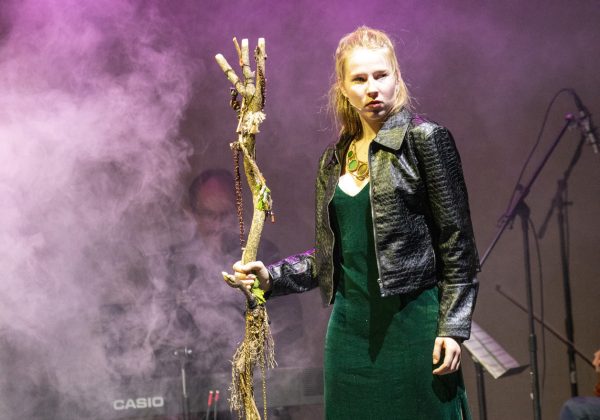Community Views Between the World and Me
“I never wanted you to be twice as good as them, so much as I have always wanted you to attack every day of your brief bright life in struggle. The people who must believe they are white can never be your measuring stick. I would not have you descend into your own dream. I would have you be a conscious citizen of this terrible and beautiful world.” – Ta-Nehisi Coates, author of Between the World and Me
As part of this year’s MLK Day programming, the school encouraged students to view Kamilah Forbe’s film adaptation of Ta-Nahisi Coates’ number-one New York Times bestseller, Between the World and Me. The text was initially adapted for the stage as a set of monologues in 2018, then for an HBO special event last year.
Initially written as an open letter to Coate’s own son, the film reflects the author’s experiences of growing up in fear of violence against the Black community. Coates writes to give his son a warning about the injustices faced daily by Black people in the United States, but also to reveal hope for his son’s power to create change, proven through the beauty and resilience of the past generations.
Forbes said about the film adaptation, “I related to everything he said, so I wanted to find a way in: How do we take a body of voices that embody one man’s voice?” This consideration is central to the movie, as the book is an intimate, first person account. To preserve the poetry and internal voice, Forbes incorporates different film elements, such as narration of the original text, archival footage, and animation to give the audience Coate’s compelling message. The production features artists ranging from musicians Ledsi and Black Thought to actors Wendell Pierce, Joe Morton, Phylicia Rashad, Angela Bassett, and Mahershala Ali—each individual contributing a different narrative.
Actress Yara Shahidi and activist Angela Davis read from the same excerpt on Coates’ frustration with the Civil Rights Movement curriculum in schools, which teaches Black students to respond to violence with peaceful resistance. Much of the book and film addresses the author’s grief over the shooting of fellow Howard University student, Prince Carmen Jones Jr., who was killed by an undercover police officer in 2000. Actress and singer MJ Rodriguez and actor Kendrick Samson reenact the traffic stop by the Prince George County police and recite the litany of their offences.
There are also sections that are original to the film adaptation. The film ends with the story of Breonna Taylor, a 26-year-old Black woman who was shot last spring in her apartment in Louisville, Kentucky by police executing a no-knock warrant. Taylor’s mother, Tamika Palmer, shares her grief, paralleling the sentiments of Prince Carmen Jones’ mother, also depicted in the film. This addition to the film highlights how tragedies are repeated despite the fact that 20 years have passed since the fatal shooting of Jones. In an interview with Variety, Forbes said, “ I do feel this is an ode to 2020 and reflective of this particular time. When I think of that ‘In Memoriam’ scroll at the end, we were updating until [the] final delivery, which was a couple of weeks ago. And even within that time there were other lives that were lost that made the headlines that we wanted to make sure to include. And that says something about our country. It’s the whole reason why [we need] to make this film.”
Student perspectives varied as to what part of the film they found most impactful and what connections they made to their lives. Aldo Leal ’22 said, “I really liked the fact that the movie held on to the poetic language [of the book]. I also thought the film was powerful because it included some stories about everyday life and valuable memories.”
Ilene Park ’22 said, “I think the references to the ‘Black body’ were extremely powerful, because it felt like [both] a sharp criticism against the history of racism being perpetrated through generations, [and] a call for empowerment and a celebration [of the Black body].”
The first day of Black History Month is February 1.






